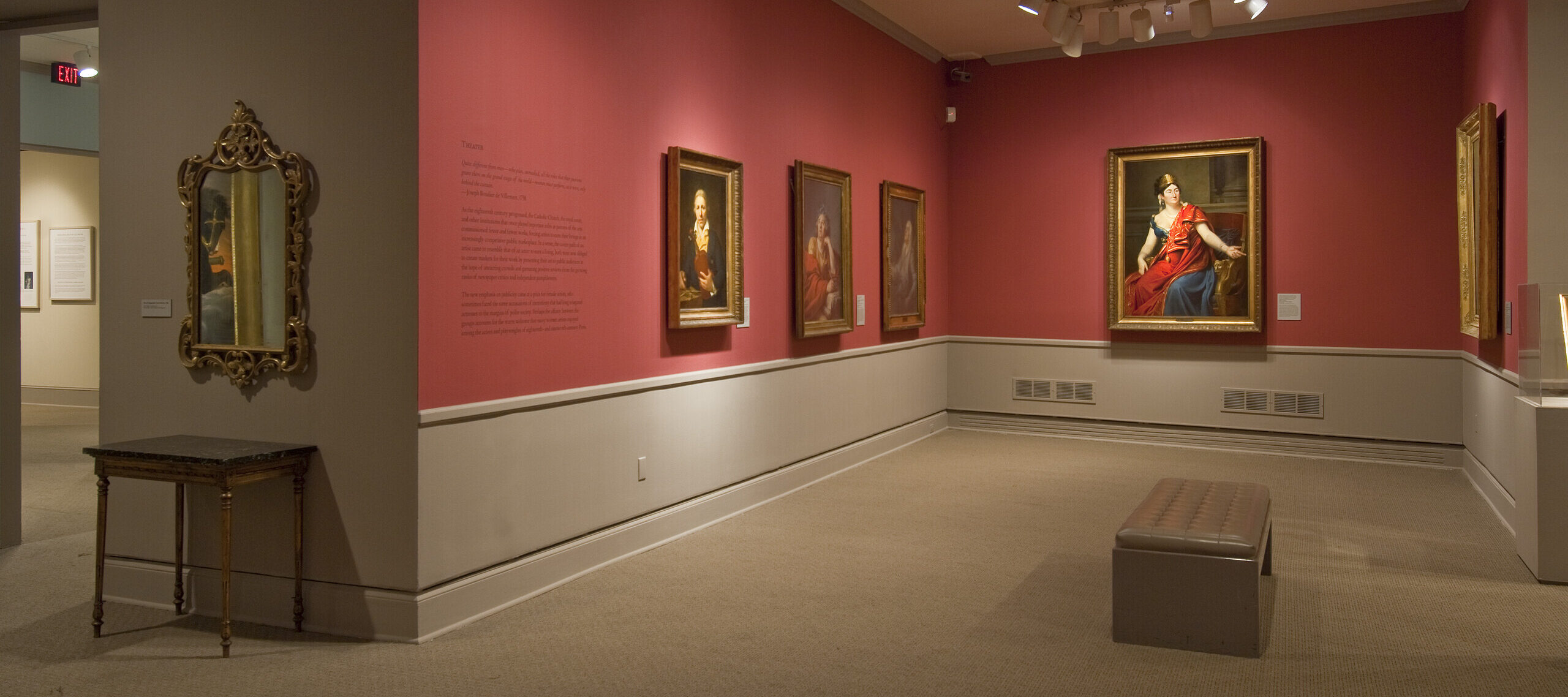In Royalists to Romantics: Woman Artists from the Louvre, Versailles, and Other French National Collections, 77 works by 35 artists display the talents of French Revolution-era women artists. Their paintings are windows into their careers and the singular challenges of their time. The catalogue that NMWA has published to illustrate Royalists to Romantics includes essays as well as individual artist biographies that give insight into the lives of women artists working in France between 1750 and 1848. This excerpt explores the life of one the show’s featured artists, Adélaïde Labille-Guiard.

Portraitist Adélaïde Labille-Guiard was the daughter of a shopkeeper whose boutique, near the Palais-Royal, stocked fashionable fabrics and trimmings.¹ She learned her considerable skills from artists in the neighborhood: she studied miniature painting with François-Élie Vincent (1708–1790), who taught in the Academie de Saint-Luc; she consulted academician Maurice Quentin de La Tour (1704–1788) for advice on pastels; and she learned oils from François-André Vincent, an academician and son of François-Élie. François-André became her second husband in 1800, seven years after she divorced Nicolas Guiard, an administrator in the treasury of the clergy.
Labille-Guiard joined the Académie de Saint-Luc in 1774, and later that year sent a pastel and a miniature to its final show. In 1782 she began exhibiting in Pahin de la Blancherie’s commercial venue, the Salon de la Correspondance. Two pastels in the present exhibition—the portraits of the playwright Jean-François Ducis and the actor known as Brizard—first appeared in Pahin’s rooms. Both were commissioned by the comtesse d’Angiviller, wife of the director of the Batîments du roi, who later helped Labille-Guiard to fend off sexually charged criticism. Six members of the Académie royale also sat for portraits by Labille-Guiard in this period; all six voted for her admission.

On May 31, 1783, Labille-Guiard and Élisabeth Louise Vigée-LeBrun became the twelfth and thirteenth women ever granted full membership in the Académie royale, bringing the number of female members to its limit of four. Their joint salon debut attracted considerable attention from critics, who found the women’s charms nearly as appealing as their paintings. As Labille-Guiard honed her ability to capture the look and feel of assorted materials and fashions, for instance, in her Portrait of a Woman, she attracted the attention of Mesdames Adélaïde and Victoire, the powerful aunts of Louis XVI, who commissioned several large-scale portraits.
The outbreak of the Revolution in 1789, and Mesdames’ subsequent emigration, left Labille-Guiard in a difficult position. Remaining in France, she joined the faction of academicians seeking to reform, not abolish, the institution, and affiliated with the moderate politicians known as the Feuillants. However, as radical forces gained control, she was required to submit her largest painting, a group portrait featuring the comte de Provence (the king’s brother who became Louis XVIII), to be burned. She retired to the countryside with Vincent and two students during the Reign of Terror. In 1795 Labille-Guiard returned to Paris and to the Salons, but neither her spirits nor her career ever recovered fully.
Note
1. Labille-Guiard has been the subject of three books: Laura Auricchio, Adélaïde Labille-Guiard: Artist in the Age of Revolution (Los Angeles, 2009); Anne-Marie Passez, Adélaïde Labille-Guiard: Biographie et catalogue raisonné (Paris, 1973); and Roger Portalis, Adélaïde Labille-Guiard, 1749–1803 (Paris, 1902).
